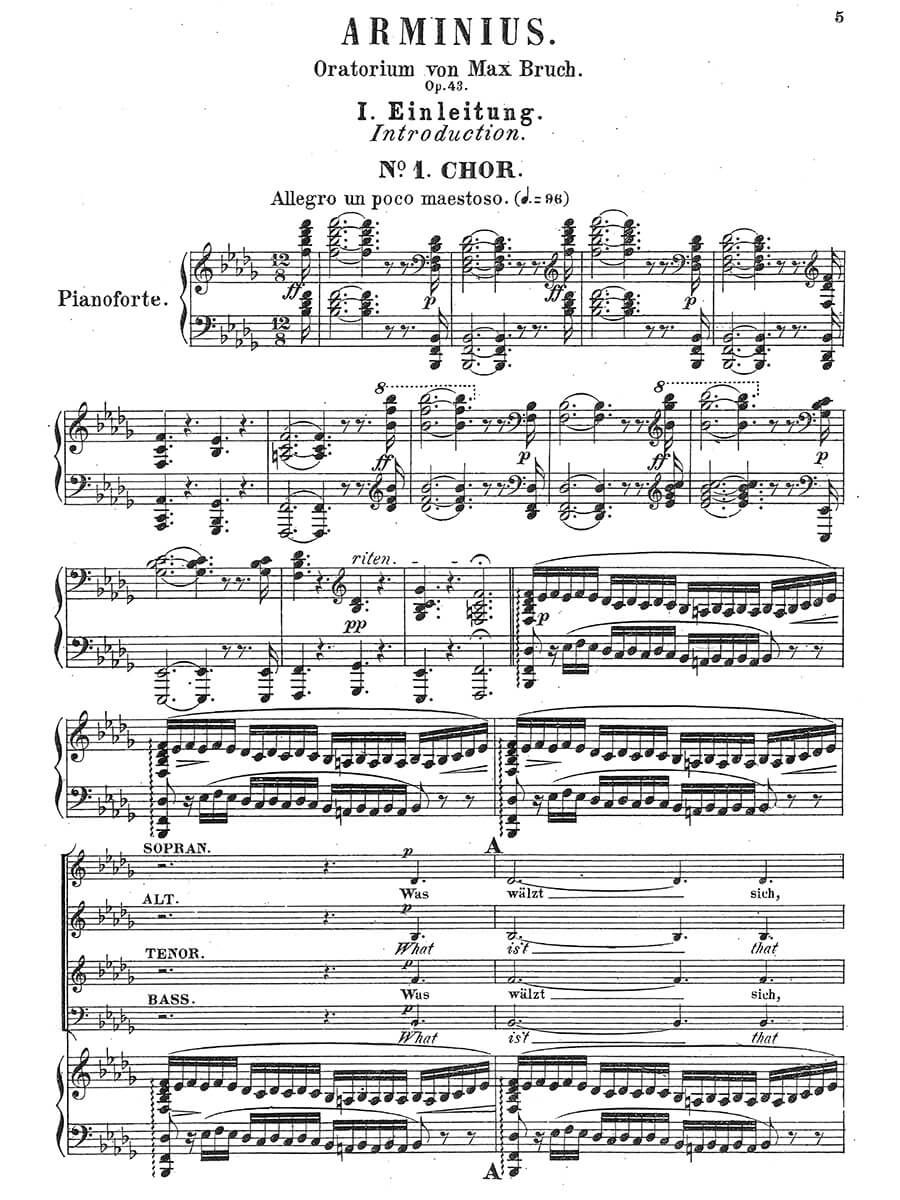Arminius Op. 43, secular oratorio for three solo voices, chorus, organ, and orchestra (Vocal Score)
Bruch, Max
36,00 €
Preface
Bruch, Max
Arminius Op. 43, secular oratorio for three solo voices, chorus, organ, and orchestra (Vocal Score)
Infos:
Im heiligen Hain
Der Aufstand
Die Schlacht
At the end of his life Max Bruch grew increasingly impatient of new currents, but in the second half of the nineteenth century he was a leading figurehead especially in one particular genre: the German choral symphony. Now that symphonic choruses have become rarities, such works have a difficult time obtaining a hearing. However, over the last decade and a half a number of them have been revived, at least temporarily. Among them are Bruch’s Lied von der Glocke, Odysseus, Moses, and the present Arminius of 1875-77 (op. 43), a secular oratorio for three solo voices, chorus, organ, and orchestra depicting the victory of the German chieftain Arminius over the Roman general Varus in the year 9 BCE.
Though Arminius quite obviously builds on Schumann, it is a typical child of its time in its overall design and workmanship. Like the contemporary historical paintings of Piloti and others, it bears witness to musical historicism – a current long frowned upon and dismissed as “academic” and uninspired, but currently undergoing a gradual renaissance. The four-section work (it is clearly broken down into four movements: Introduction, In the Sacred Grove, The Rebellion, and The Battle) is written in a vigorous musical idiom and constructed in the traditional manner with choruses, recitatives, arias, ensembles, and scenes, just as we find decades later in works by other composers. The libretto, by a Westphalian grammar school teacher named Joseph Cüppers, attracted Bruch with its high quality: “The verses are magnificent, with dithyrambic panache, and the melodies leap by themselves from the fine rhythm.” The text seemed predestined for the music festivals of the day. Yet Bruch, thoroughly aware of the turmoils then raging in the world of music, struggled with the words. After various revisions, the première took place in Zurich on 21 January 1877, one year after the première of Wagner’s Götterdämmerung. It would be inappropriate, however, to pursue a comparison with a work from a wholly different genre: where Wagner abandoned the choral cantata after several fairly unsuccessful early efforts, the secular oratorio was a perfectly natural expressive vehicle for Bruch and many of his contemporaries. That it lacked the radicality of Wagner’s music dramas in form and compositional fabric is already apparent in the original text, which is intent on depicting facts rather than exploring character. With the foundation of the German Reich, the primacy of cultural education and an emphasis on tradition were en vogue, and it was a clever stratagem to dispense with a personal appearance of Varus in order to make Arminius more clearly the work’s central figure.
Jürgen Schaarwächter, 2016
For performance material please contact Simrock, Berlin.
Score Data
| Edition | Repertoire Explorer |
|---|---|
| Genre | Choir/Voice & Orchestra |
| Size | 225 x 320 mm |
| Specifics | Vocal Score |
| Printing | Reprint |
